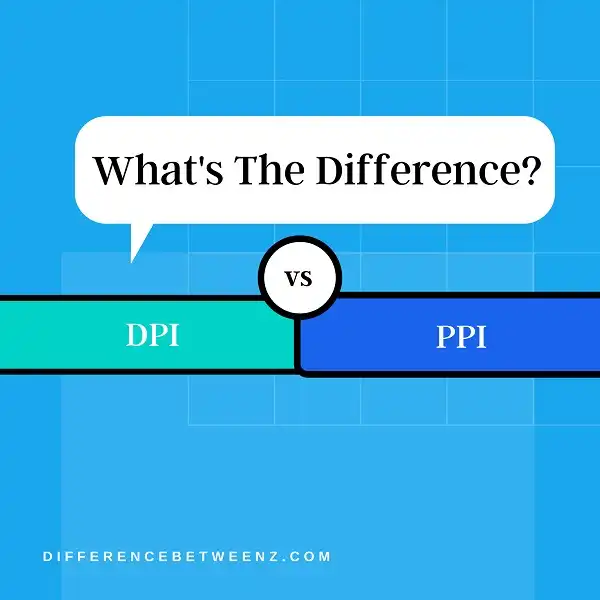DPI and PPI are two important factors to consider when printing an image. DPI stands for dots per inch, while PPI stands for pixels per inch. They both have an impact on the quality of the printout. In this blog post, we’ll take a look at the difference between DPI and PPI, and how to choose which one is right for you.
What is DPI?
DPI stands for “dots per inch” and refers to the resolution of an image. The higher the DPI, the greater the resolution and the sharper the image will be. DPI is important when printing images, as a higher DPI will result in a higher quality print. DPI is also important when scanning images, as a higher DPI will result in a more accurate scan. However, DPI is not generally important when viewing images on a computer screen, as screens have a fixed resolution that cannot be changed. For this reason, DPI is often considered to be a printing setting rather than a display setting.
What is PPI?
Pixel per inch (PPI) is a measure of the pixel density (resolution) of an electronic display or computer printer. It is usually referred to as dots per inch (DPI). For example, a display with 96 PPI has 96 pixels per inch. Pixel density is measured in pixels per unit of length, typically inches. This metric is important when choosing a display for a particular application, especially when a high resolution or small text is required. In general, the higher the pixel density, the sharper the image will appear. Pixel density can also be used to describe the resolution of digital photos and other images. The term is sometimes mistakenly used interchangeably with DPI, which stands for “dots per inch” and refers to the number of ink dots that can be printed in one inch. However, DPI should not be confused with PPI, which stands for “pixels per inch” and refers to the number of pixels in one inch on an electronic display or computer printer.
Difference between DPI and PPI
DPI (dots per inch) and PPI (pixels per inch) are measures that express the resolution of an image. DPI is a measure of print resolution or the number of dots of ink per inch that a printer can produce. PPI is a measure of pixel density or the number of pixels per inch in a digital image. The two measures are often confused, but they are not the same thing. DPI is a function of printer hardware, while PPI is a function of the digital image itself. When printing an image, the DPI setting determines how many dots of ink will be used to render each pixel in the image. A high DPI setting will result in a higher quality print, but it will also use more ink and take longer to print. In general, DPI should be set as high as possible without sacrificing print quality or speed. PPI is simply a measure of the number of pixels in an image and has no direct effect on print quality. However, increasing the PPI of an image will make it appear sharper and more detailed when viewed on a monitor or other display device. For this reason, it is often desirable to increase the PPI of an image before printing it.
Conclusion
In order to produce the best quality images for your website or print project, it’s important to understand the difference between DPI and PPI. DPI is a measure of the number of dots per inch in an image, while PPI is a measure of how many pixels are in an image. When creating digital graphics or printing projects, it’s important to use a resolution that is high enough to produce a good-quality image. To ensure your images look their best, work with a professional imaging specialist who can help you determine the right resolutions for your needs.


